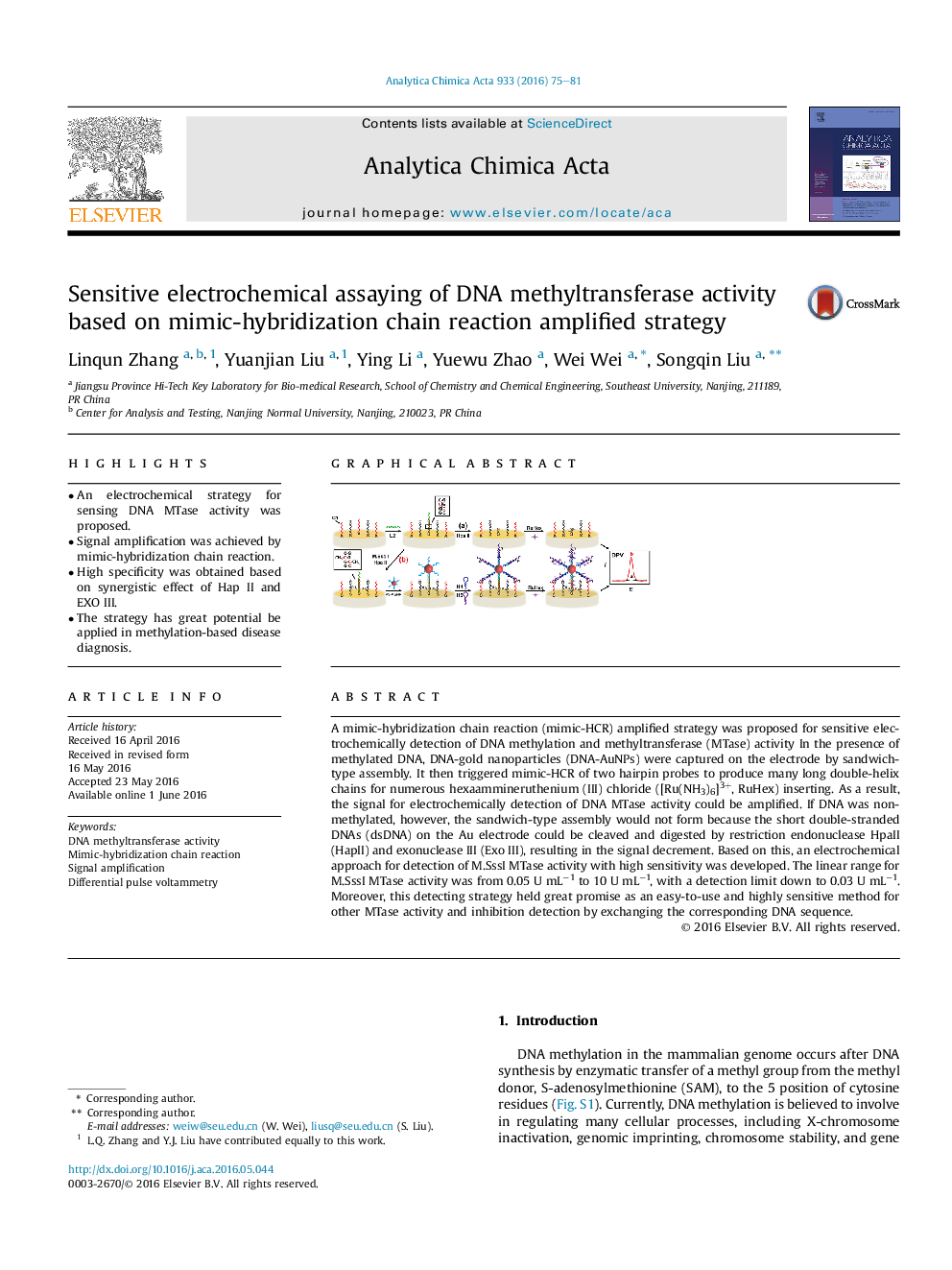| Article ID | Journal | Published Year | Pages | File Type |
|---|---|---|---|---|
| 1162842 | Analytica Chimica Acta | 2016 | 7 Pages |
•An electrochemical strategy for sensing DNA MTase activity was proposed.•Signal amplification was achieved by mimic-hybridization chain reaction.•High specificity was obtained based on synergistic effect of Hap II and EXO III.•The strategy has great potential be applied in methylation-based disease diagnosis.
A mimic-hybridization chain reaction (mimic-HCR) amplified strategy was proposed for sensitive electrochemically detection of DNA methylation and methyltransferase (MTase) activity In the presence of methylated DNA, DNA-gold nanoparticles (DNA-AuNPs) were captured on the electrode by sandwich-type assembly. It then triggered mimic-HCR of two hairpin probes to produce many long double-helix chains for numerous hexaammineruthenium (III) chloride ([Ru(NH3)6]3+, RuHex) inserting. As a result, the signal for electrochemically detection of DNA MTase activity could be amplified. If DNA was non-methylated, however, the sandwich-type assembly would not form because the short double-stranded DNAs (dsDNA) on the Au electrode could be cleaved and digested by restriction endonuclease HpaII (HapII) and exonuclease III (Exo III), resulting in the signal decrement. Based on this, an electrochemical approach for detection of M.SssI MTase activity with high sensitivity was developed. The linear range for M.SssI MTase activity was from 0.05 U mL−1 to 10 U mL−1, with a detection limit down to 0.03 U mL−1. Moreover, this detecting strategy held great promise as an easy-to-use and highly sensitive method for other MTase activity and inhibition detection by exchanging the corresponding DNA sequence.
Graphical abstractFigure optionsDownload full-size imageDownload as PowerPoint slide
